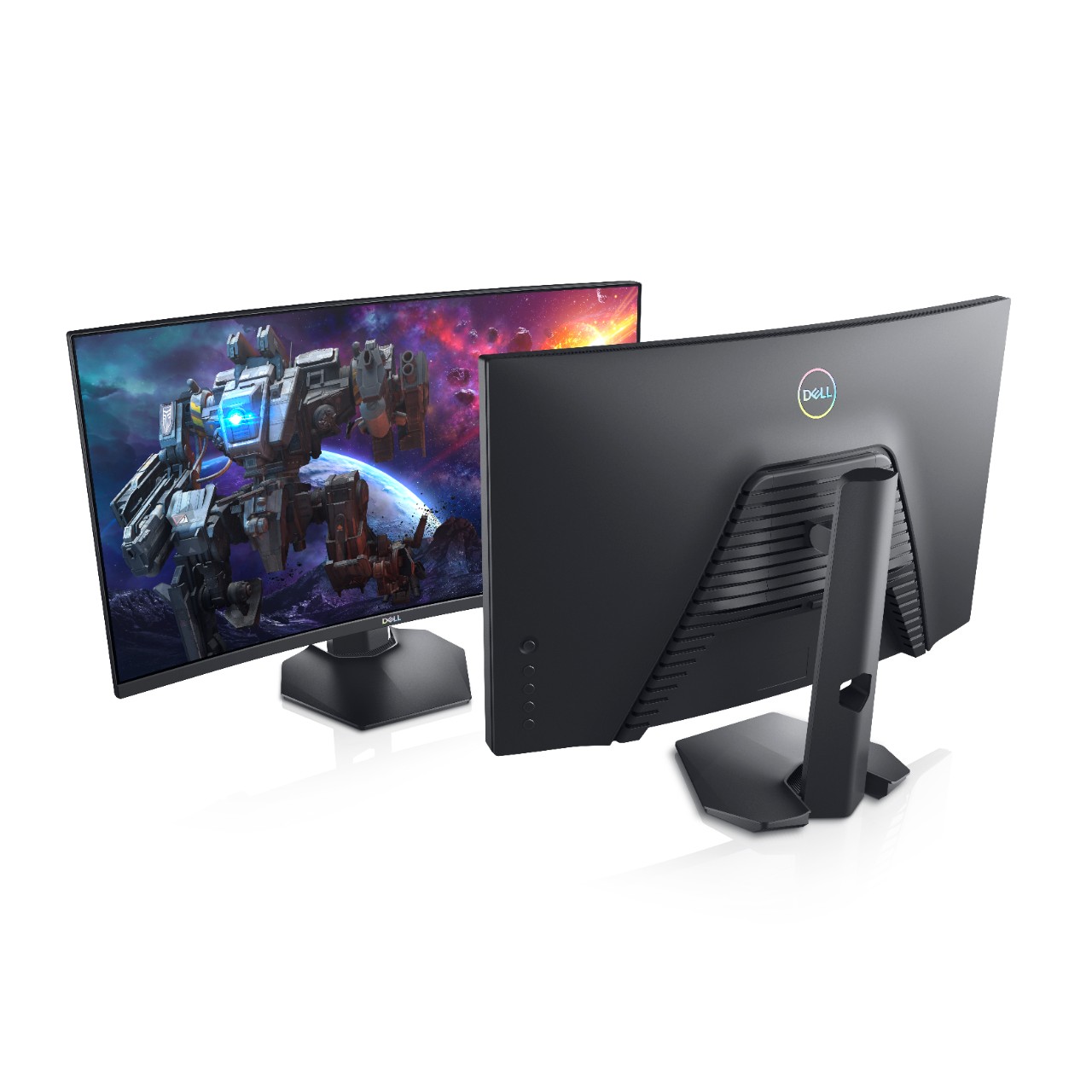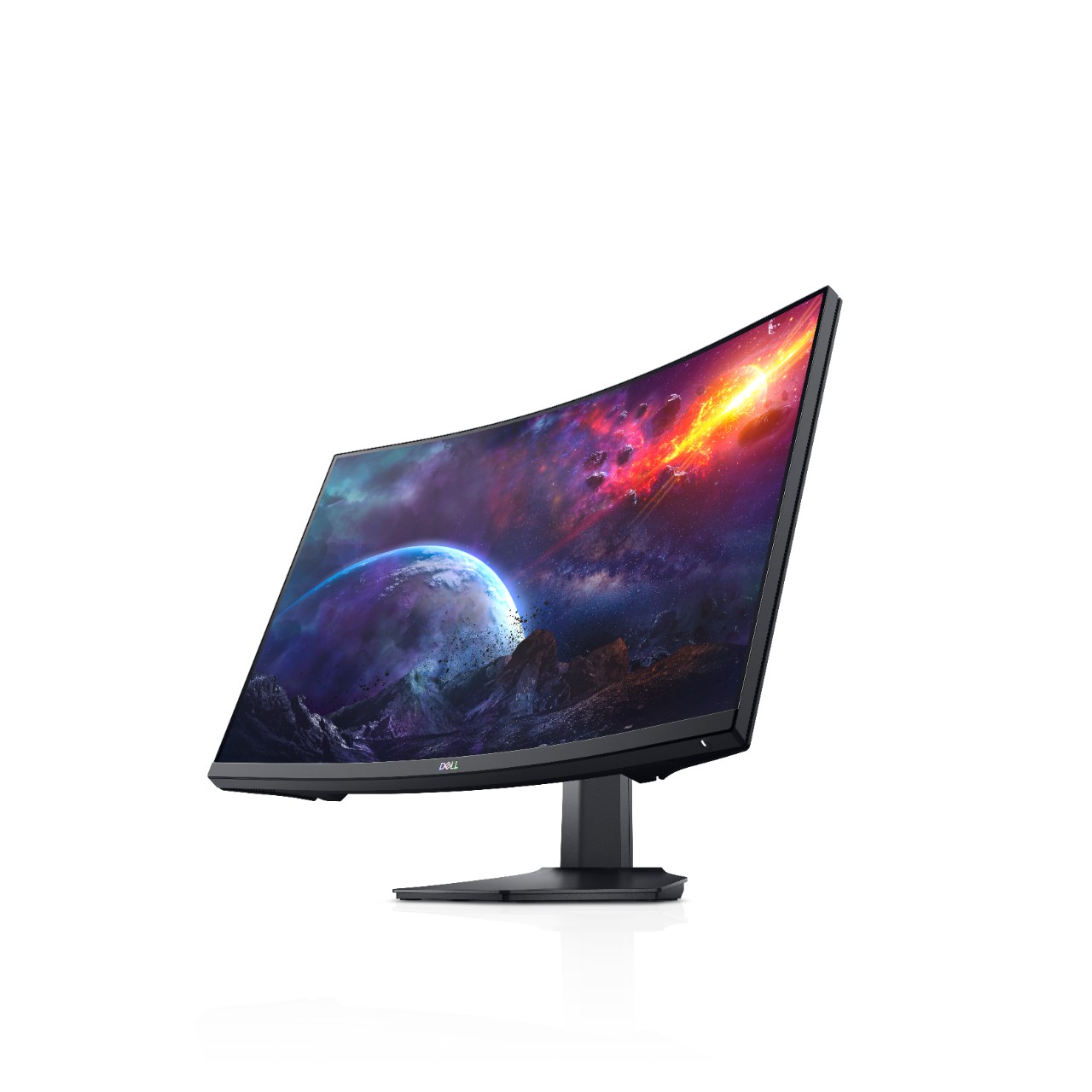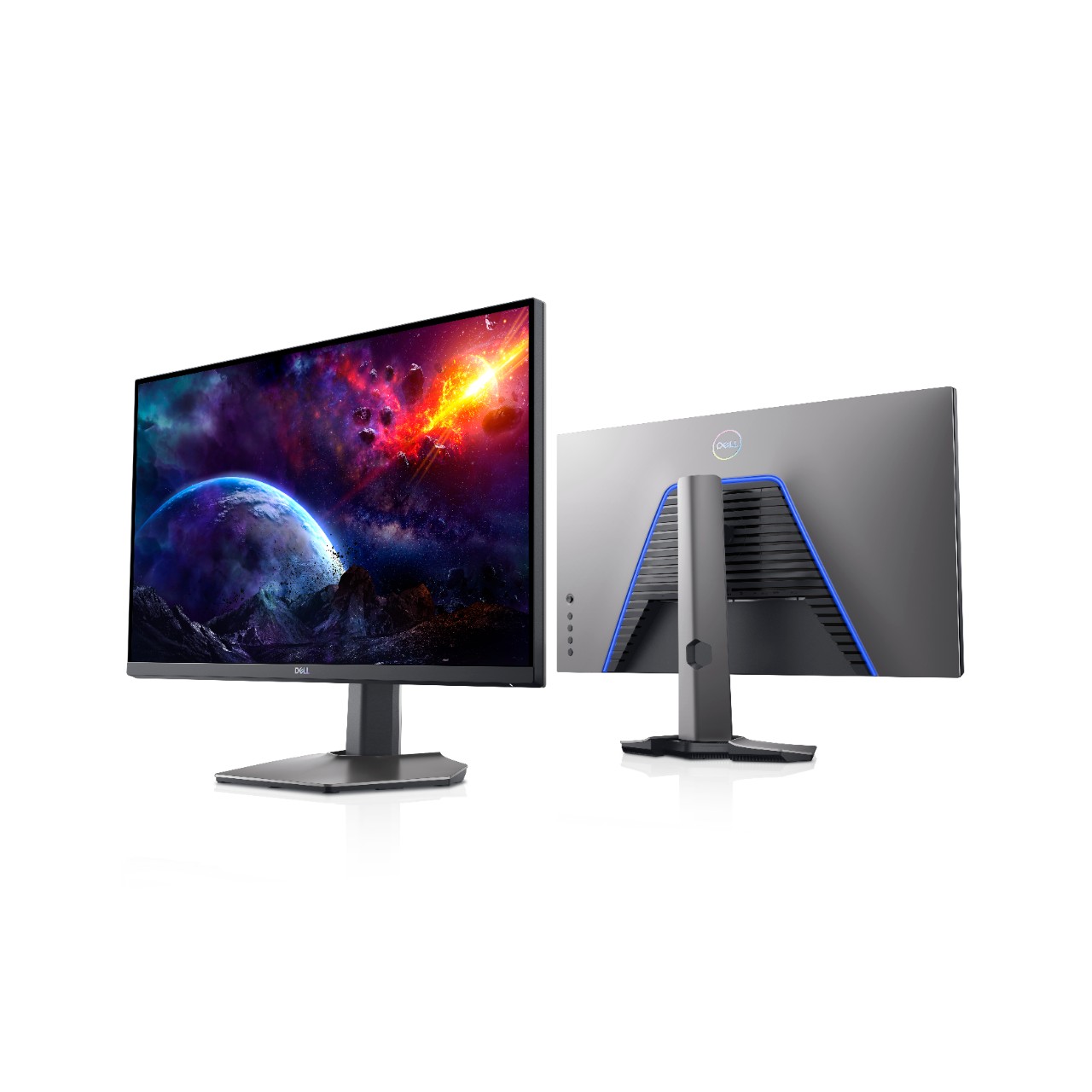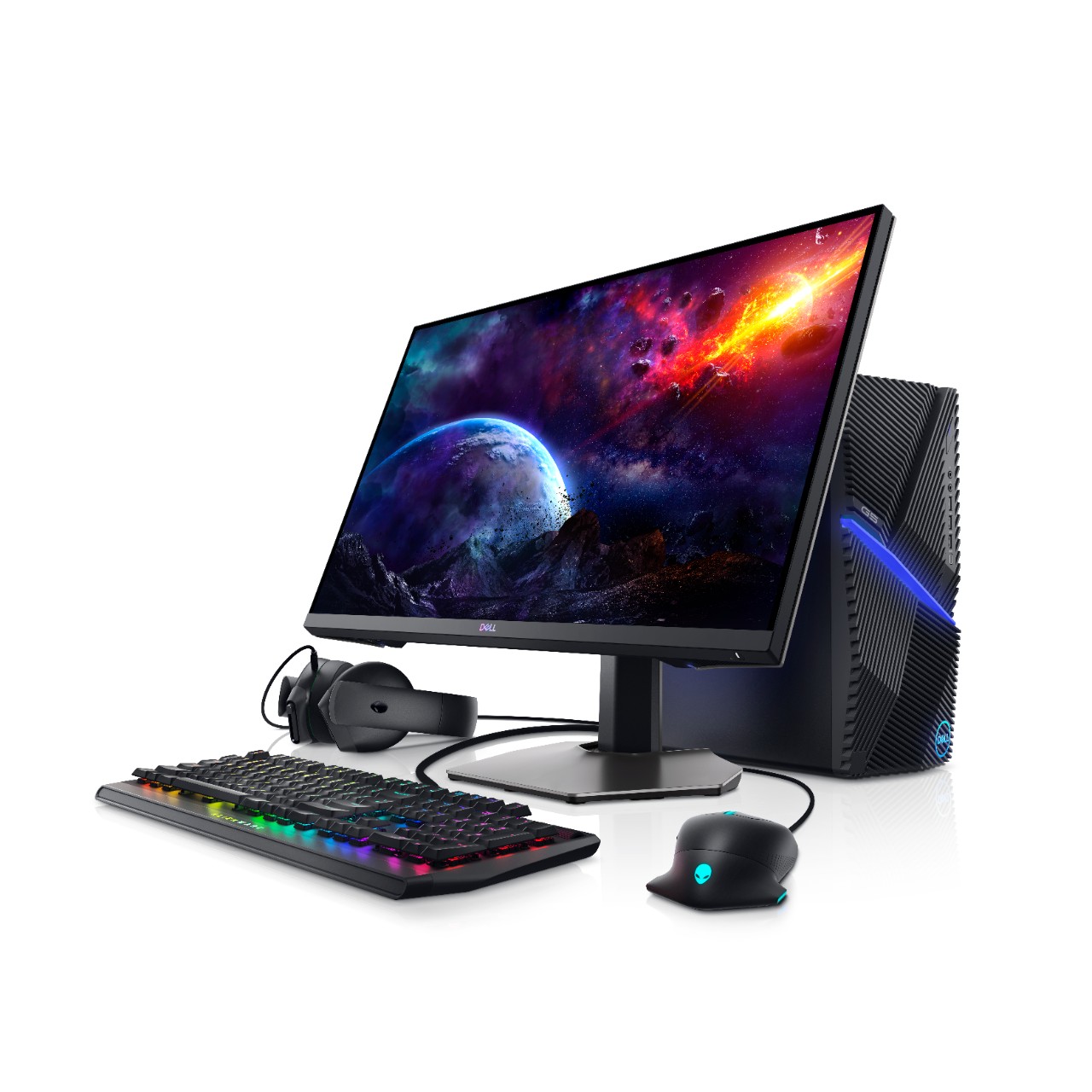Dell unveils new 27-inch gaming monitors with curved displays and high refresh rates
A pair of Dell 27-inch monitors offers gaming goodness in two flavors: Curved or high-resolution

Dell announced a pair of 27-inch gaming monitors today offering two new options for gamers that want to step up their display quality. The first is the Dell S2721HGF, a curved monitor with full HD resolution and plenty of impressive gaming features.
The second is the Dell S2721DGF, a flat panel monitor that boasts QHD (2560 x 1440) resolution and up to 165 Hz refresh rate, for gaming at lightning speed. Whether you want the immersion of a curved display or the speed and detail of a QHD panel with high refresh rate, these Dell monitors have you covered. But will they be great enough for our best gaming monitors list?
- Check out the best monitors we've reviewed
- Level up with one of the best gaming PCs
- The best gaming mouse for every style and budget
Dell 27 QHD and FHD gaming monitors release date & pricing
Announced today, the Dell S2721HGF curved gaming monitor will go on sale August 21, with a starting price of $279.99.
The flat-panel Dell 27 Gaming Monitor (S2721DGF) is going on sale sooner, coming to stores July 28, and selling for $569.99.

Dell 27 QHD and FHD gaming monitors specs
| Header Cell - Column 0 | Dell 27 Gaming FHD Monitor (S2721HGF) | Dell 27 Gaming QHD Monitor (S2721DGF) |
|---|---|---|
| Size, Type | 27 inches, Curved | 27 inches, Flat |
| Panel type | Vertical Alignment (VA) panel | Fast IPS Nano Color panel |
| Resolution | 1920 x 1080 | 2560 x 1440 |
| Refresh rate | 144 Hz | 144Hz (Native with HDMI), 165 Hz (Native with DisplayPort) |
| Aspect ratio | 16:9 | 16:9 |
| Brightness | 350 nits | 400 nits |
| Backlight | LED Edgelight | LED Edgelight |
| HDR | No | Yes |
| Port selection | 2x HDMI 1.4, 1x DisplayPort 1.2, 1x Headphone-out Jack | 2 x HDMI 2.0, 1 x DisplayPort 1.4, 4 x USB 3.0 downstream, 1 x USB 3.0 upstream, 1 x Headphone-out jack, 1 x Audio Line-out jack |
| Adaptive Sync | Nvidia G-SYNC, AMD FreeSync | Nvidia G-SYNC, AMD FreeSync |
| Height adjustment | up to 100mm | up to 130mm |
| Tilt | -5° / 21° | -5° / 21° |
| Swivel | n/a | -45° / 45° |
| Pivot | n/a | -90° / 90° |
Dell 27 QHD and FHD gaming monitors design
Both of Dell's new gaming monitors share a few design elements, from the angular ventilation grills in back to sturdy, adjustable stands on the bottom. The cooling systems, in particular, look to be well thought-out, with air intakes on the back and hot air exhausts along the top of the monitor chassis. On the flat-paneled S2721DGF, the rear intake vents are also accented with a glowing blue light that matches the stylings of Dell's new gaming desktops.
Both monitors boast height and angle adjustment, but the flat-paneled S2721DGF also has swivel and pivot motion, letting adjust the monitor from side to side without moving the base, as well as rotating the screen from landscape mode to portrait orientation.

Dell 27 QHD and FHD gaming monitors features
Both Dell monitors have support for AMD FreeSync and Nvidia G-Sync adaptive frame rate technologies. As a result, each monitor will be able to match its refresh rate to the output of your graphics card, eliminating screen tearing and the judder that comes from having your GPU and display out of sync.
Sign up to get the BEST of Tom's Guide direct to your inbox.
Get instant access to breaking news, the hottest reviews, great deals and helpful tips.
The S2721HGF is a curved full HD monitor, with a speedy 144Hz refresh rate and great brightness for a standard VA (Vertical Alignment) panel. Boasting up to 350 nits of brightness from the LED edge-lit panel, the S2721HGF offers decent color and contrast for a basic gaming monitor, and excellent response times, with a 4 millisecond gray-to-gray response time in Extreme Mode.
The display has a gentle 1500R curve radius, offering a nice midpoint between screens that are flat and those that may have too-aggressive a curve for comfortable viewing. Gaming is one area where curved displays really pay off, offering better visibility for every inch of the screen, and delivering a more immersive gaming experience by wrapping the game's field of vision around the viewer in a way that better simulates natural peripheral vision.
With a 16:9 aspect ratio, it's not as extreme as some ultra-wide displays we've seen, but will still offer the sort of viewable real estate that lends itself well to gaming, whether it's from a tricked out gaming rig or the latest game console.

For a flatter option with faster performance, there's the Dell S2721DGF. This flat-panelled monitor is also 27 inches, but the similarities pretty much end there. The panel boasts a higher 2560 x 1440 resolution, and over DisplayPort, refresh rates can reach 165 Hz (HDMI connectivity limits the display to 144 Hz).
But the S2721DGF also features an impressive Fast IPS Nano Color, which pairs the IPS panel with a nano-crystal enhanced backlight that offers better brightness and color. The result is color that covers 98% of the DCI-P3 color gamut and boasts more than a billion colors. In fact, the display is rated up to 400 nits of brightness, and offers HDR support, which the curved FHD model does not.
The flat S2721DGF is also outfitted with a broader port selection, with both HDMI and DisplayPort connectivity, along with 4 USB ports on the monitor, making it that much easier to connect peripherals and storage, without the need to reach around to the back of your gaming PC.
Dell 27 QHD and FHD gaming monitors outlook
If you're looking for a new monitor for your desk or gaming rig, the curved Dell S2721HGF and the flat-panelled Dell S2721DGF are two 27-inch monitors that you'll definitely want to check out.
Brian Westover is currently Lead Analyst, PCs and Hardware at PCMag. Until recently, however, he was Senior Editor at Tom's Guide, where he led the site's TV coverage for several years, reviewing scores of sets and writing about everything from 8K to HDR to HDMI 2.1. He also put his computing knowledge to good use by reviewing many PCs and Mac devices, and also led our router and home networking coverage. Prior to joining Tom's Guide, he wrote for TopTenReviews and PCMag.

